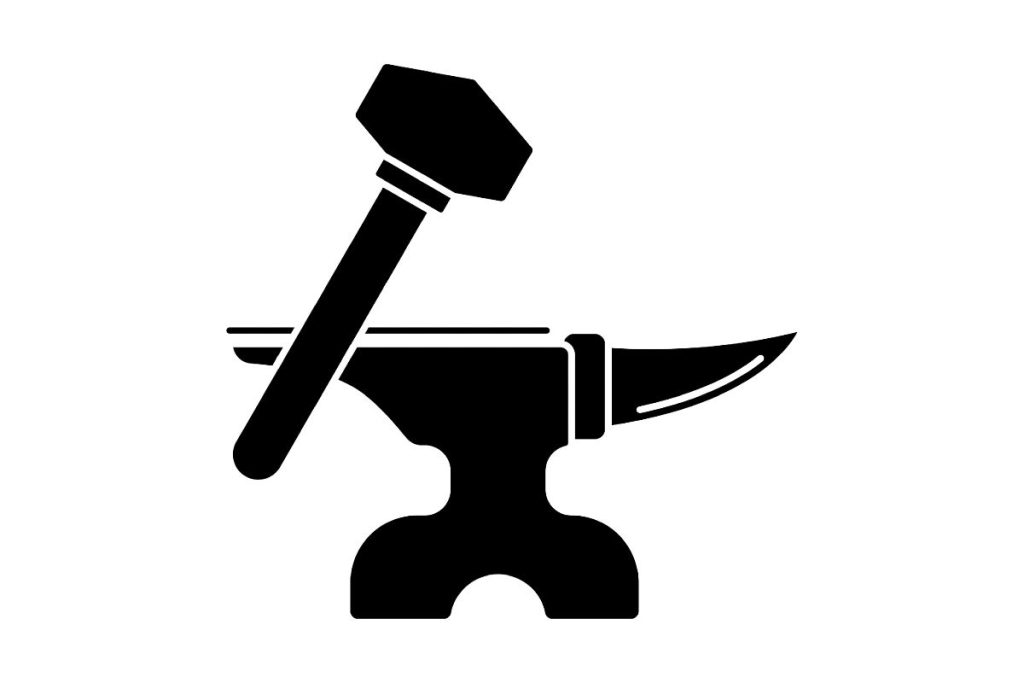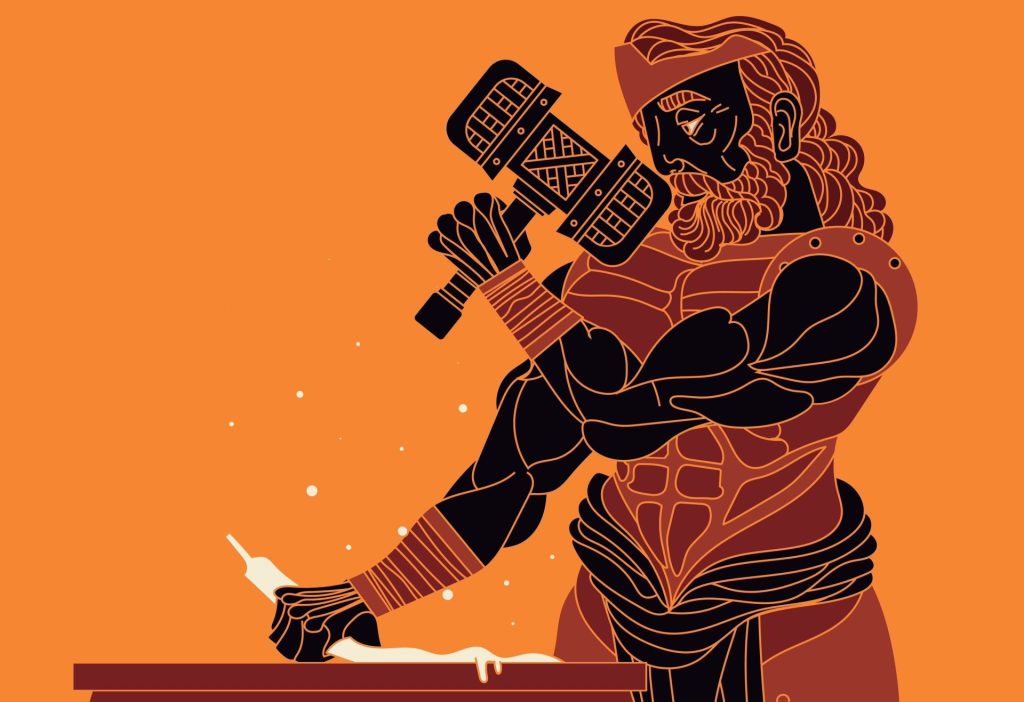The Hephaestus Symbol consists of an anvil, hammer, and pincers/tongs because Hephaestus was a blacksmith.
Hephaestus, also known as Hephaistos, was the Greek god of blacksmiths, craftsmanship, metallurgy, and fire. He was a unique god as he was physically disabled and not very attractive. Despite being noble, he had a real-world profession like the working class.
Hephaestus’s work as a blacksmith is reflected in his symbol, which includes the hammer, the anvil, and the pincers. He carried no elaborate symbols but only the tools of his trade. While some interpretations of the symbol have been around for centuries, there are some modern-day implications as well.

The Greek God Hephaestus
Hephaestus is known as the god of fire, forging, and craftsmanship. The symbol of Hephaestus reflected the smith god’s work.
He was the god of all craftsmen, although he is mostly associated with metalworks and blacksmiths. The inventors, masons, and carpenters looked up to him. His portrayal often includes all crafts and not just metalworking.
Hephaestus has the tong and hammer of a smith, which he used to work with metals like bronze and iron. There are also depictions of the god with a walking stick since he had a physical deformity. Some literature also suggests that he had a mobility aid.
Hephaestus is also the god of fire and volcanoes. While he is the divine patron of craftsmen, the gaseous fires and natural volcanoes are connected with him and considered his workshops.
Having the Roman equivalent Vulcan, Hephaestus has many animal symbols associated with him. Although his sacred bird was a crane, some of his temples had guard dogs who were kind and intelligent. He also rode a donkey.
Hephaestus In Greek Mythology
Hephaestus was the son of Zeus and Hera, but some sources believe that he was born without a father. Unlike most Greek gods, Hephaestus was not an ideal figure. He was ugly and lame.
After a quarrel between Hera and Zeus, she threw Hephaestus from Mt. Olympus, disgusted by his ugliness. Hera grabbed him by the ankles, twisted him, and flung Hephaestus out from the lofty perch. He is the only god who was thrown out of Mt. Olympus.
He got injured upon falling from heaven into the sea and possibly became crippled. Thetis, the sea goddess, raised him on the island alongside Achilles. Here he built a house and a workshop to hone his skills as a craftsman.
He started making military equipment and weapons for both gods and mortals alike. It included Hermes’ winged helmets and sandals and Achilles’ armor which he wore in the Trojan War.
Hephaestus also made a golden throne to trap his mother, Hera, for her betrayal. The throne trapped his mother and rose in the air, taking her away from the gods.
Dionysus came here to fetch him back to Mt. Olympus, and then Zeus ordered Hephaestus to marry Aphrodite. She was the goddess of love and famous for her beauty. Many theories suggest that Zeus offered Aphrodite to Hephaestus to free the queen.
Another myth about his marriage is that the alluring beauty of Aphrodite caused conflict among the gods. Zeus proposed the marriage of Zeus and Aphrodite to settle the dispute peacefully.

Interpretation Of Hephaestus
The ancient god Hephaestus is prevalent in modern times as well. He stood out from the other gods because of his physical deformity and his indulgence in manual labor. Hephaestus was also the only god who had an association with a single profession and not lordly domains.
He made simple weapons that his followers used daily. Unlike other gods, even his mount was a donkey, an animal meant for menial work and not display.
His enemy, Ares, was presented as an earthly type of person who had common armor and weapons, although he was perfect in terms of physical aspects.
Hephaestus, although depicted as deformed and ugly, was one of the most skilled and resourceful ancient Greek gods. His story began with many setbacks, but with his determination and hard work, he managed to win his place back at Mount Olympus. From being an outcast, he became a skilled blacksmith of the gods.

